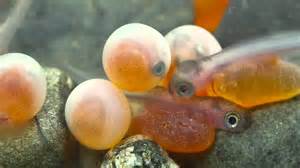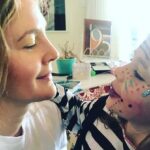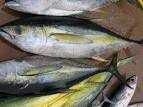
[sg_popup id=”1″ event=”onload”][/sg_popup]before you begin to read this post,it is assumes that already have basic knowledge of fishery. this was sent in by a specialist in fishery and aquaculture Sir Joel, Gistwheel editor,science and nature.
for a start.. equipment
Equipment used in the hatchery: Table of about 50cm × 10cm, Net or Kacaban, Scale, Towel, Strings 1ml and needles, sharp knife, Mortar, a pair of scissor, bottle of physiological salt solution 0.9%, Water analysis kit, Thermometer, and pH metre.
what to do next
Hatchery Procedure:
Selection of spawners,
Extraction of pituitary,
Injection of the female spawner,
Stripping of the female Spawner,
Collection of milt from the male,
fertilization of the strip eggs,
Incubation of fertilized eggs,
Rearing of fry.
Selection of Brood stock
Brood stocks which are used for spawning are sourced from different parent. This help to avoid inbreeding which can result to disease attack, stunted growth e.t.c.
During selection females with soft and swollen bellies were collected and checked as follow;
The head was covered with a towel and the fish was put on its back.
The abdomen was pressed towards the tail.
If the fish is matured and viable greenish egg will appear gently without rushing. If the colour is white it implies that the egg is still developing. Dull brown colour egg implies that the eggs have passed the stage of production.
Fish with running eggs are not considered because it might have been used for reproduction or the eggs are spoiled.
For the male brood stock, it should not be less than 7month old and should weigh more than 200g.
After selection the weight of the female and male was measured using a scale balance. The essence of doing this is to ensure that both have equal body weight, Because the condition guiding the use of pituitary is that both male and female brood stock must be of equal body weight or the male should be slightly above the female and not lesser than the female body weight.
Extraction of pituitaries
The pituitary is extracted from the brain of the male.
Procedures
Take the male fish to be used
and place on a table
Kill the fish by cutting the head out
Place the head of the fish upside down and cut the lower jaw away.
Use a sharp knife to heat the side of the palate to open it, the pituitaries gland is collected using the tip of the knife.
Put it in a mortar washed with physiological salt solution.
Crush the pituitaries in the mortar immediately, using a 2ml string containing physiological salt solution water wash the pestle by spreading it gently on it.
Fill the syringe, Insert the needle on it and empty the string again into the mortar, when this is done you can inject the fish. This procedure was followed always, as the needle of get blocked if the pituitary is not well completely crushed.
Use your 2ml string to extract the pituitary from the mortar leaving suspended particles.
4.3.3Injection process
The head of the female spawner was covered with a wet towel; the fish was injected at angle 45° in the dorsal muscle below the dorsal fin in the direction of the tail above the lateral line (Intramuscular method).
After injection the area of injection was rub with the finger to prevent backward flow of the injected hormone and also to ensure even distribution of the hormone, After which the fish is kept in a concrete tank and covered because as soon as the hormone start reacting, It cause the fish to be aggressive. The fish was left there for a period of 9-10hour for proper ovulation to occur; this period is called latency period i.e. the time between inducement and latency period. The latency period is dependent upon the temperature, the higher the temperature the quicker the egg ovulates.
Stripping of female spawners
At the end of the latency period the fish was ready for stripping; Stripping was done by two persons as follows-
The fish was held tightly with wet towel
The fish was striped by gently pressing the abdomen with the thumb from the pectoral fin towards the genital papilla. The eggs flow out easily in a thick jet like form from the genital vent and are collected into a dry plastic container.
Stripping was done until there was sign of blood discharge which signify that the ovary is empty.
Saline water was added to protect the eggs from having contact with fresh water.
I was taught how to prepare saline water , which was done by adding level table spoon of salt in one litre of fresh water.
Milt collection
Milt was collected from a male which was used to fertilize the stripped egg. Since the male cannot be striped the milt was collected by opening the body cavity with a pair of scissor or razor. Once it is open the testis collected and washed with saline water to remove blood stain. The testis was cut with razor blade into small piece; the milt was pressed out with a teaspoon into a teacup. Saline water was added to it and properly mixed; the essence was to protect it against fresh water which can deactivate it.
Fertilization of stripped eggs
The stripped eggs were fertilized by introducing the milt and fresh water which is enough to neutralized the salinity. The egg mass and water were stirred continuously by gently shaking of the bowl, Stirring continues until the eggs were distributed on the spread kacaban in the nursery tank. As soon as this is done fertilization occur in less than 60minute.
Incubation of fertilized eggs
After fertilization has occurred, The incubation is dependent on the water temperature .In ARAC,I observed that the egg hatched between 24 and 36hours of incubation.
Fry management
After the eggs have hatched, eggs remnants (Shell), crippled and dead larvae were removed by siphoning with sucking host. The fry look like tiny needles each with a green globe and yolk sac, the yolk sac contains high quality reserve food for growth and development during the larva stage. The larvae fed on their yolk for 3-5days after the yolk has been absorbed then larvae turn black, at this the introduction of external fed began. The fry were fed 6-12times with Artemia for 2-7 days before they were transferred to the nursery pond were they were reared to fingerling stage. In ARAC we used both earthen pond and concrete tank for fingerling production it both were screened with net against predator attack like frog, toad, snakes, birds, etc.
Cause of mortality in the hatchery unit
Poor water quality; I was taught by my supervisor to siphoned derbies every morning and change the water after removing the debrise.
Poor handling of fry which can be caused by introducing high pressure of water into their tank, and using of inappropriate hust for siphoning.
Poor feeding which can be caused by feeding them poorly and by feeding them with inappropriate size of feed.



